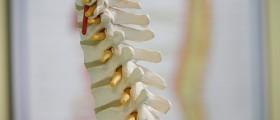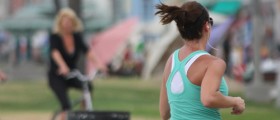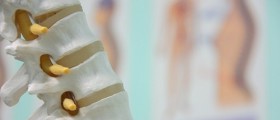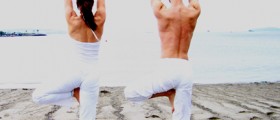
The human spine includes 24 bones known as vertebrae. Between the vertebrae bones there are discs which are made of soft tissue and serve to cushion the vertebrae bones and allow movement of the spinal column. The external part of a disc is a fibrous ring while the middle is made up of jelly-like material known as the nucleus pulposus.
The spinal cord includes the nerve fibers that extend from the brain and are protected by the spine. These nerves pass between the vertebrae and take and receive signals from other parts of the body. The spine is additionally supported and strengthened by strong ligaments. There are also different muscles surrounding different parts of the spine.
Prolapsed Disc Overview
A prolapsed disc also known as slipped disc is the condition in which the gel from the middle part of the disc protrudes outwards (herniates) due to rupture of the outer part of the disc. This condition is also called a herniated disc. The damaged disc can press on the spinal cord and surrounding nerve roots. Inflammation may also occur around the affected disc.
Disc prolapse can affect any disc in the spine. Most commonly, however, this occurs in the lower back in the lumbar region of the spine. Severity of symptoms of a slipped disc depends on the size of the prolapse. The common symptom is pain in the back. However, acute back pain can be due to many different conditions such as strained muscle and only less than 1 in 20 cases of this pain are caused by a slipped disc.
Causes of a Prolapsed Disc
A prolapsed disc usually occurs in people aged between 30 and 50 years and is more common in women. The cause of this condition is unknown but it is associated with weakness in the outer part of the damaged disc. There are many things that can trigger a disc prolapse in individuals with weakness in a disc. This includes sneezing, awkward bending and heavy lifting in inappropriate position.
There are also several risk factors for developing a disc prolapse. For example a job that involves a lot of lifting or sitting, weight lifting, obesity and older age.
Symptoms of a Prolapsed Disc
Primary symptom of a slipped disc is a sudden and severe back pain. This pain is typically aggravated by activity, coughing or sneezing while lying down flat brings a relief. Nerve root pain is also common. This can cause the pain to radiate down the leg. Additionally, a prolapsed disc can be accompanied with numbness and weakness in limbs. In severe cases, the condition can affect the control of the urinary bladder and bowel.















-Causes,-Symptoms,-Diagnosis,-Treatment_f_280x120.jpg)

Your thoughts on this
Loading...